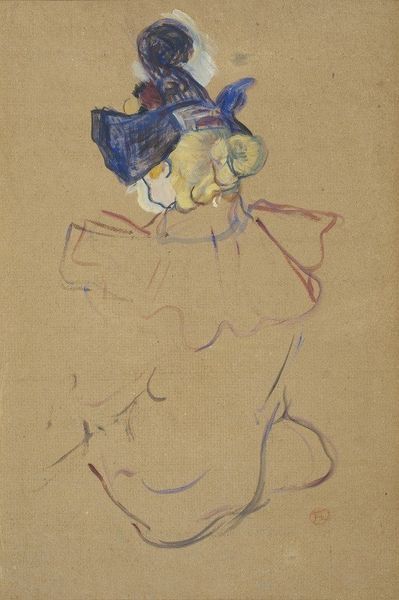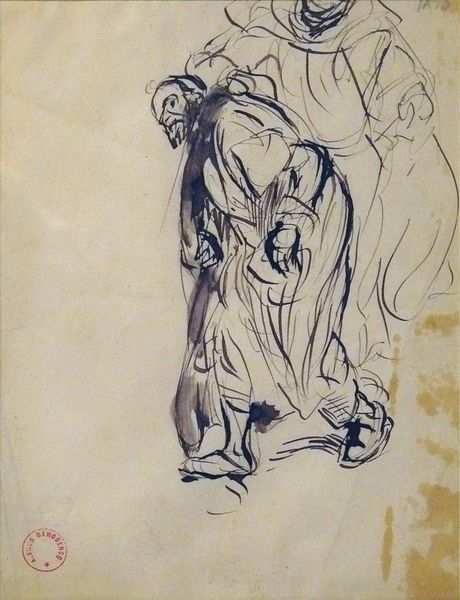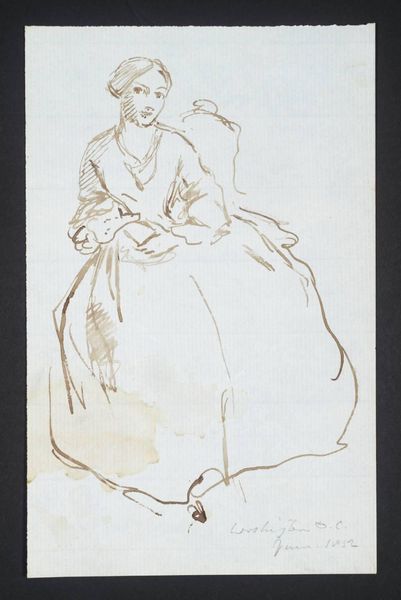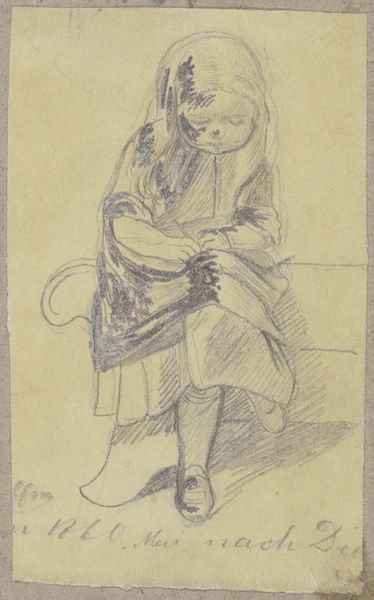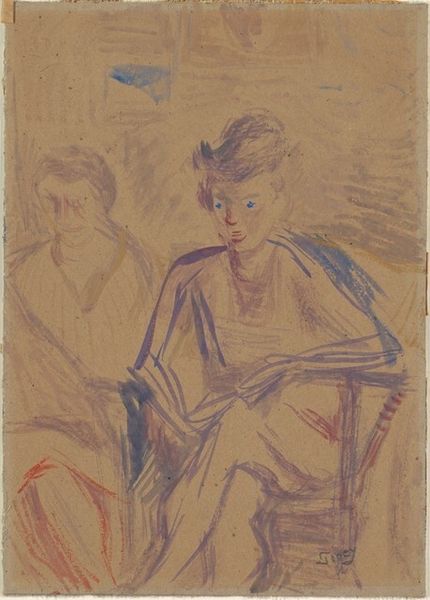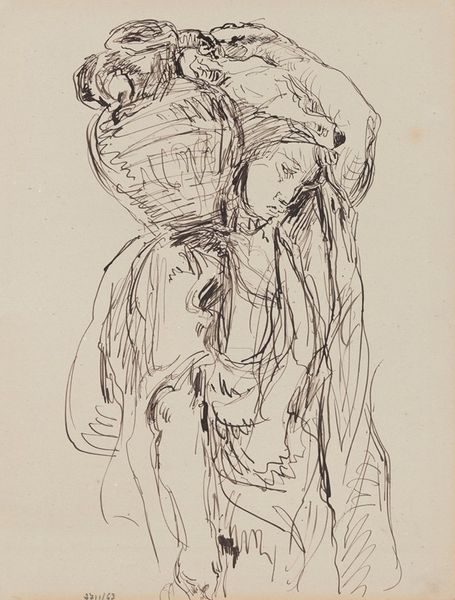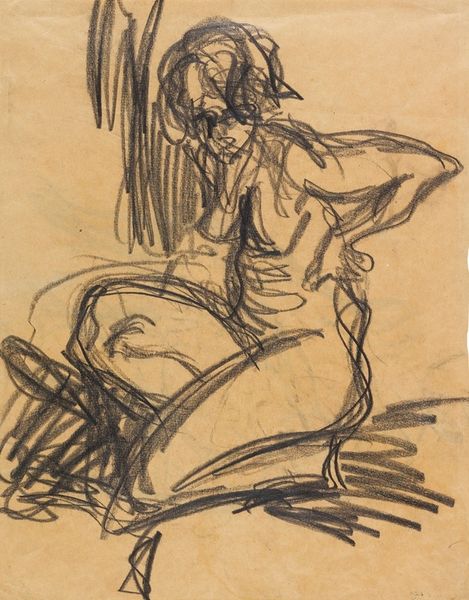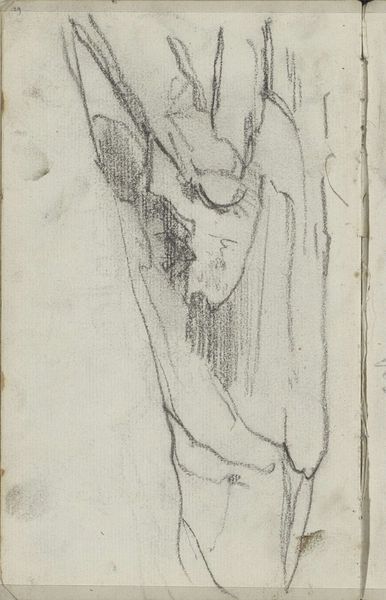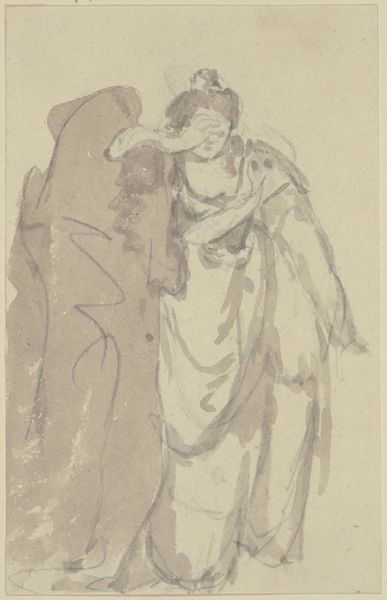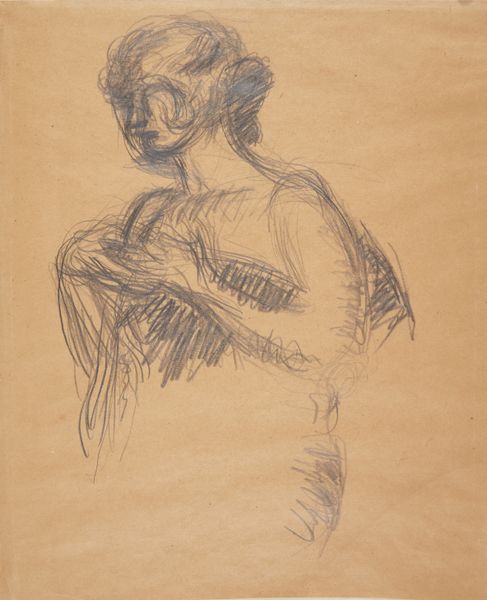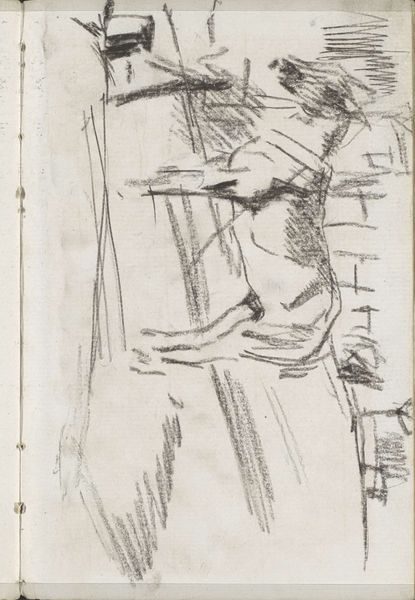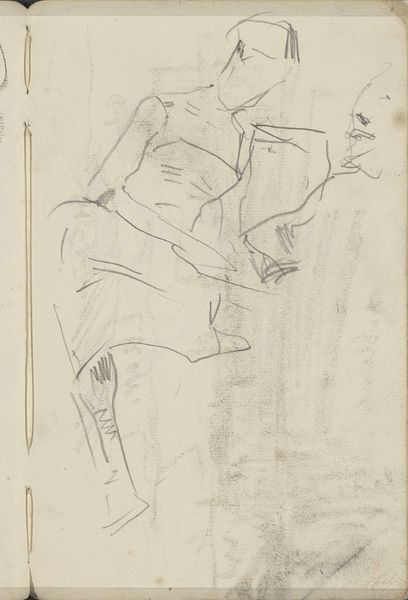
drawing, pastel
#
portrait
#
drawing
#
figuration
#
intimism
#
pastel
#
post-impressionism
Copyright: Public Domain: Artvee
Editor: Here we have Henri de Toulouse-Lautrec's "L’Argent" from 1895, created with pastel on cardboard. It’s got this very ephemeral, fleeting feel to it with the quick, suggestive lines. What do you make of this intriguing piece? Curator: Well, given Lautrec's focus on depicting Parisian nightlife and the commercial entertainment industry, particularly figures from marginalized communities, "L'Argent"—money—speaks volumes. We see two figures, possibly a performer and her patron. The lack of detail blurs identities but throws the spotlight on the socio-economic dynamic that fuels these performances. Who profits? Who is exploited? Editor: So the title directly relates to the transaction occurring, or potentially occurring, between these two figures? Is that part of the point? Curator: Absolutely. Consider how easily these women were painted into society's fabric but had little power or recognition. How the burgeoning art market often ignored the reality of who owned the "means of production." Lautrec gives us access to these backstage areas. Do you think his viewpoint here is celebrating or critiquing the system? Editor: It's hard to say. It feels very intimate, yet there is a definite separation, perhaps distance even, despite their proximity. It seems he acknowledges their presence without passing judgment. It makes you think about what power dynamics were at play here and makes me think it might even be both at once: acknowledging but not ignoring? Curator: Exactly! It invites that discussion. It reminds us art isn't created in a vacuum but reflects larger societal forces. We, as viewers, play a role in determining its future trajectory and what it symbolizes for us. Editor: This has made me look at Lautrec in a whole new way; I didn't realize how much the title contributes to shaping our understanding and how vital art's position is as a cultural reflection. Curator: And it's how engaging with the past allows us to comprehend the inequalities that persist today and what shifts are now happening regarding these long-term topics.
Comments
No comments
Be the first to comment and join the conversation on the ultimate creative platform.
